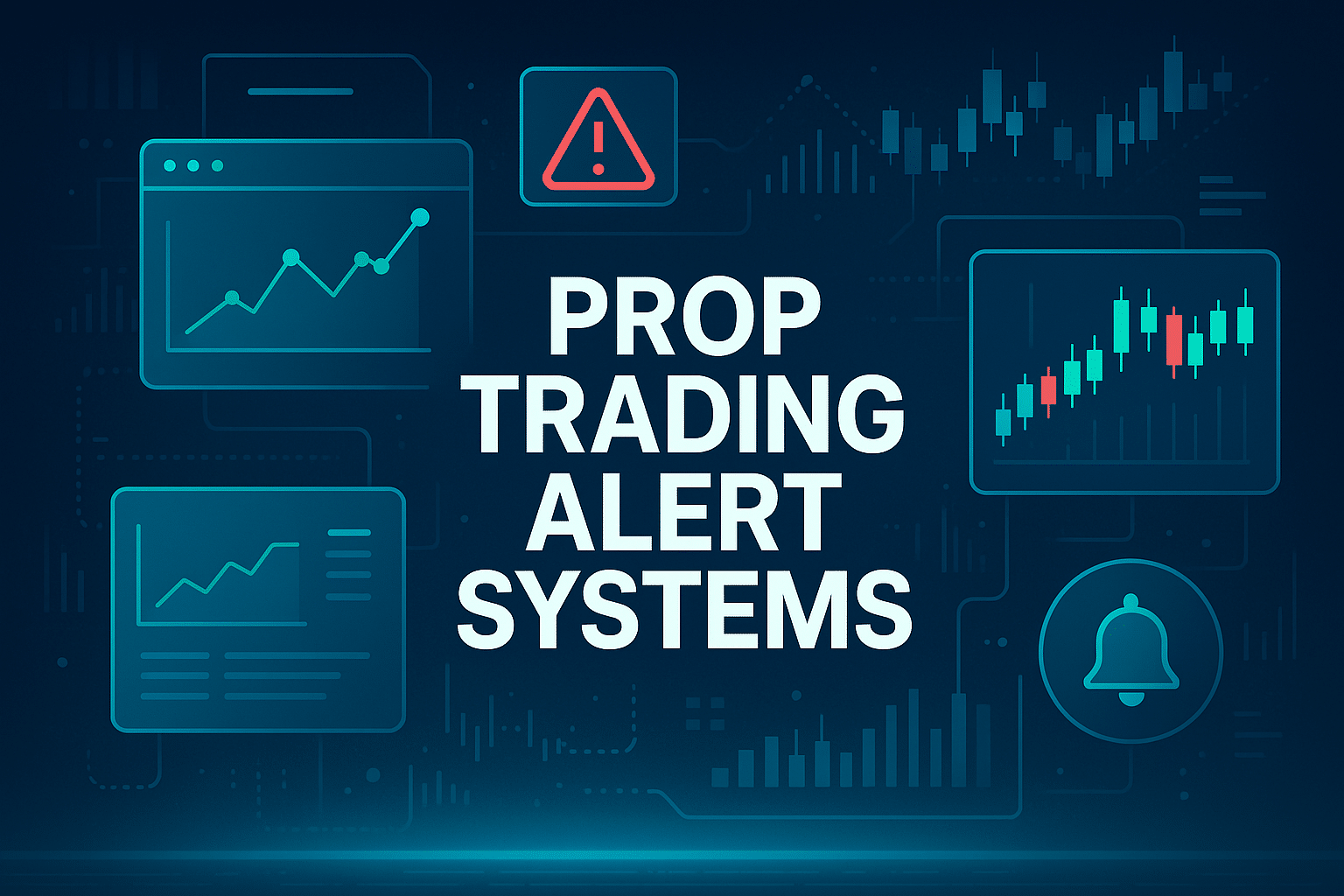Setting Up Alerts for Prop Firm Compliance
In proprietary trading, rule compliance is non-negotiable—especially when managing a funded account. A small mistake can lead to serious consequences, including account termination. To avoid such outcomes, traders are turning to prop trading alert systems as an essential tool for staying within limits and maintaining consistency.
These alert systems act as digital safeguards, helping traders monitor activity, detect errors, and react before problems occur.
Why Prop Trading Alert Systems Are Essential
Proprietary trading accounts often come with strict guidelines regarding drawdowns, lot sizes, session timings, and news-related restrictions. Violating any of these could jeopardize your account.
Using prop trading alert systems allows you to:
-
Prevent accidental rule violations
-
Maintain consistency and discipline
-
Avoid overtrading and emotional decisions
-
Monitor risk levels in real-time
-
Stay aligned with your trading objectives
Rather than relying on memory or habit, traders benefit from automated reminders and warnings.
Types of Alerts You Should Use
To build a solid compliance framework, your alert system should address all critical areas of trading. Below are the most important categories.
1. Risk Management Alerts
Risk-related rules are the most common cause of account violations. Alerts in this category should include:
-
Daily loss limits: Get notified when a set percentage of your balance is lost in a day
-
Overall drawdown threshold: Trigger alerts when nearing absolute or trailing drawdown limits
-
Open position size: Warn yourself when exposure exceeds your planned risk level
Such alerts provide a buffer that helps you adjust before exceeding limits.
2. Session and News Alerts
Many trading environments restrict activities during high-impact economic events or specific trading hours. Ignoring these can lead to disqualified trades.
Recommended alerts:
-
Economic news alerts: Schedule reminders for upcoming announcements using a reliable economic calendar
-
Session time alerts: Set alerts for session openings, closings, and overlaps (e.g., London/New York)
-
Weekend or overnight positions: Be reminded to close trades ahead of restricted hours or days
These alerts are crucial to avoid trading during blackout periods or invalid market times.
3. Account Health & Performance Monitoring
Real-time account health tracking ensures you’re always in control. Consider alerts for:
-
Profit milestones: Know when you’re approaching or surpassing performance targets
-
Equity balance warnings: Receive alerts when balance drops below a specific percentage
-
Leverage or margin use spikes: Be alerted when using higher risk than intended
-
Trading consistency deviation: Get notified if your trading behavior changes drastically
Such alerts reinforce discipline and help detect behavioral shifts early.
How to Build a Strong Alert System
Here are three practical ways to create and manage an efficient alert system tailored to a proprietary trading environment.
1. Use Built-In Platform Alerts
Most trading platforms offer integrated alerts based on price, technical indicators, or time.
Examples include:
-
Price alerts: Notify you when price hits a significant support or resistance level
-
Momentum alerts: Trigger when there are signs of trend exhaustion or volatility surges
-
Time-based alerts: Help track market open/close times or economic news releases
These alerts can be delivered via email, push notification, or text, depending on your platform.
2. Connect Alerts to a Trading Journal
Advanced journaling tools allow for behavioral monitoring and can trigger alerts when certain patterns emerge, such as:
-
Consecutive losing trades
-
Increased trade frequency
-
Deviations from your planned strategy
Combining journaling with alerts provides real-time feedback and promotes accountability.
3. Use Calendars for Compliance Scheduling
Beyond trading activity, deadlines and time-based restrictions are easy to overlook.
Set up calendar alerts for:
-
Evaluation phase expiration
-
Scaling opportunity reviews
-
News blackout periods
-
Withdrawal eligibility dates
This ensures you never miss important deadlines and stay on track with long-term goals.
Prop Trading Alert Systems: Why They Matter
The real strength of prop trading alert systems lies in their ability to guide you toward consistency and discipline—two core traits of successful traders. While strategy is important, execution and risk control are what protect your capital.
These systems offer:
-
Instant feedback to prevent mistakes
-
Scheduled reminders for time-sensitive decisions
-
Behavioral oversight to maintain performance standards
Think of alerts as your virtual risk manager.
Key Benefits of Smart Alerts
✅ Avoid violations before they happen
✅ Improve trade consistency by setting up structure
✅ Stop overtrading with automated behavioral feedback
✅ Reinforce discipline with minimal mental overhead
✅ Stay on track for scaling or payouts
When integrated correctly, alerts become part of your trading edge—not a distraction.
Final Thoughts
Funded trading comes with clear rules—and very real consequences for breaking them. The best traders don’t just react to the market, they also anticipate their own mistakes. That’s why implementing structured prop trading alert systems is a smart step toward long-term success.
Set up alerts, monitor your limits, and stay aligned with your plan. The more you automate your discipline, the more room you leave for focus and performance.

